A Walking Tour of London with Context Travel
My favorite way to see a city is to walk it. On a typical day, I’ll wander the streets, logging anywhere from 7-10 miles. When I set out I don’t usually have a plan. I may have a destination in mind, but you won’t find me clutching a guide book. Perhaps I should but for some reason they make me feel like a tourist. I feel similarly about taking a tour. However, on a recent trip to London, I booked a walking tour with Context Travel. Engaging with a local expert, in a small group, gave me a whole new perspective on the rich history of London and on taking a walking tour.
Walking Tour of London
On a cold and foggy morning in early November I met up with my appointed docent just across the street from the Tower of London. After a brief introduction and overview, our group was off. As we walked, our guide Tony launched right into the story of London and its Roman roots.
Luckily I had read over the London handout that Context Travel had sent ahead of time when they confirmed my tour. Among other things, it provided a historical timeline of the city. This proved to be useful as it has been a while since my last world history class.
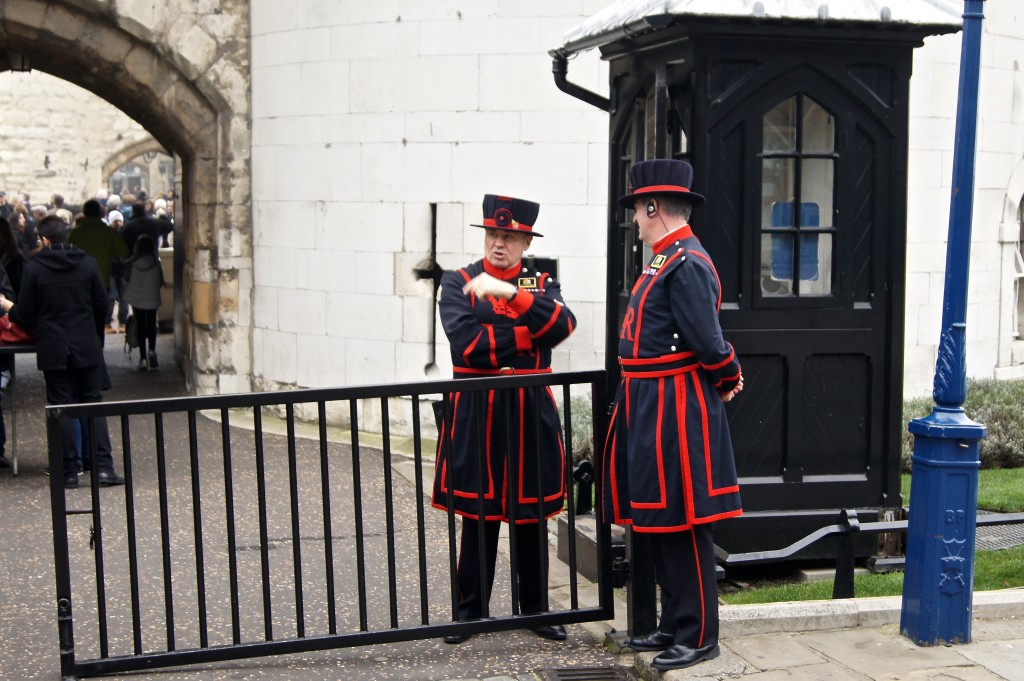 As our tour began, instead of citing facts like the Tower of London was founded in 1078 by William the Conqueror, Tony discussed how it was used as both a fortress and the gateway to the city. We learned about the Beefeaters, the famous ceremonial guards of the Tower, and he explained that they live inside the fortress, with their families. You can see their tiny apartments when you look down from the walls above. Although we didn’t go into the Castle, we walked the perimeter discussing its history and learning about things like the Traitor’s Gate which was believed to be used as the entrance for the Tudor’s prisoners.
As our tour began, instead of citing facts like the Tower of London was founded in 1078 by William the Conqueror, Tony discussed how it was used as both a fortress and the gateway to the city. We learned about the Beefeaters, the famous ceremonial guards of the Tower, and he explained that they live inside the fortress, with their families. You can see their tiny apartments when you look down from the walls above. Although we didn’t go into the Castle, we walked the perimeter discussing its history and learning about things like the Traitor’s Gate which was believed to be used as the entrance for the Tudor’s prisoners.
Places You Will Visit in London
Our first stop on our Context Travel walking tour was the oldest Church in the City of London. Tony explained to us how All Hallows by The Tower survived the Great Fire of London in 1666 only to suffer extensive damage during the Blitz in World War II. I was surprised to learn that John Quincy Adams, the 6th President of the United States was married here.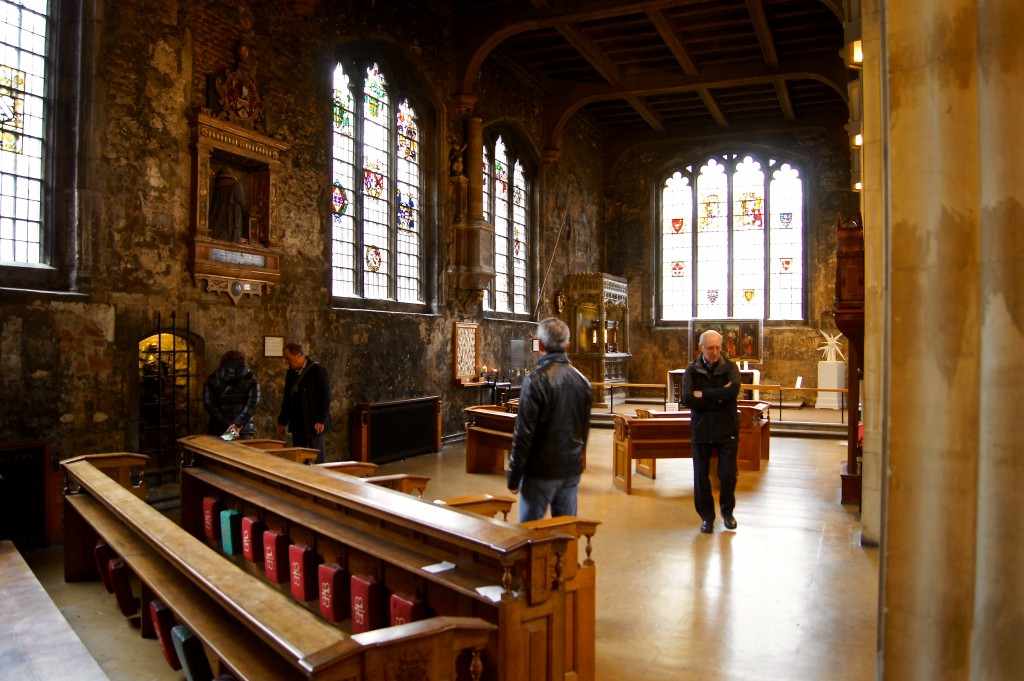 Around the corner, Saint Dunstan in the East Church Garden wasn’t so lucky. It was damaged in the Great Fire and then pretty much destroyed in during the war. Although the spire is still intact, only the gutted main part of the church remains. It is now used as a public garden. There is lawn space, benches, and trees in its center. I can imagine it is a nice respite from busy city life in London.
Around the corner, Saint Dunstan in the East Church Garden wasn’t so lucky. It was damaged in the Great Fire and then pretty much destroyed in during the war. Although the spire is still intact, only the gutted main part of the church remains. It is now used as a public garden. There is lawn space, benches, and trees in its center. I can imagine it is a nice respite from busy city life in London.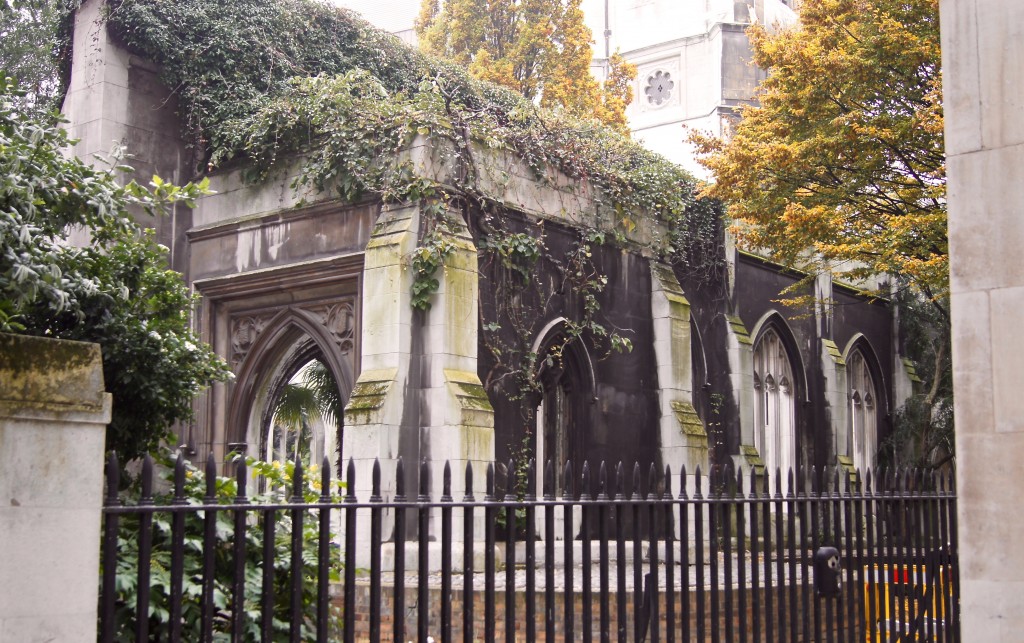 We covered a lot of ground on foot. I can’t recommend good walking shoes enough! Along the way, Tony pointed out many of these blue plaques. They are permanent historical markers that either denotes where an event occurred, or where famous people lived and worked. Honestly, I hadn’t noticed them until Tony told us about these informative signs. For the rest of the tour, I found myself actively searching them out on every corner. There are different types of blue signs throughout London. This is because they have been administered by different authorities over the years since they began appearing in the city in 1866. If you are looking for a particular sign you can use this app to help you find them.
We covered a lot of ground on foot. I can’t recommend good walking shoes enough! Along the way, Tony pointed out many of these blue plaques. They are permanent historical markers that either denotes where an event occurred, or where famous people lived and worked. Honestly, I hadn’t noticed them until Tony told us about these informative signs. For the rest of the tour, I found myself actively searching them out on every corner. There are different types of blue signs throughout London. This is because they have been administered by different authorities over the years since they began appearing in the city in 1866. If you are looking for a particular sign you can use this app to help you find them.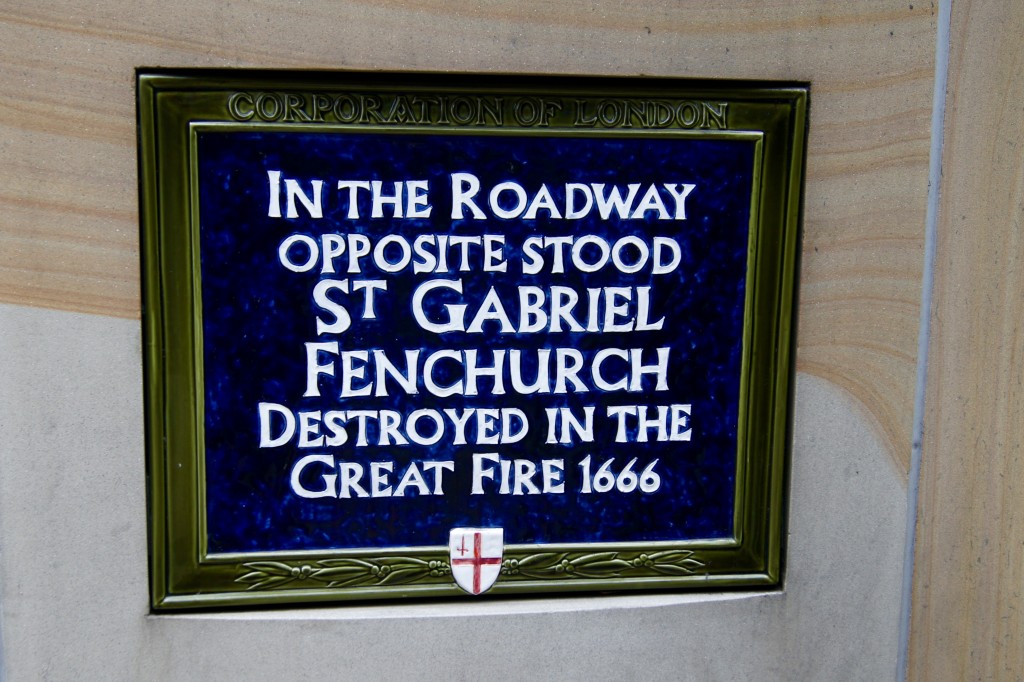 As we strolled through the Leadenhall Market Tony explained how this 14th-century Victorian commerce center was originally a meat and poultry market. He talked to us about the importance of the history of trade to the city. It is located on what was the center of Roman London. Today visitors can still purchase flowers, meats, and cheese here. It is a popular place for lunch or to grab a drink in one of the pubs. From here we walked through the Royal Exchange of London and onto Guildhall where we parted ways with Tony. I was surprised the three hours had sped by so quickly.
As we strolled through the Leadenhall Market Tony explained how this 14th-century Victorian commerce center was originally a meat and poultry market. He talked to us about the importance of the history of trade to the city. It is located on what was the center of Roman London. Today visitors can still purchase flowers, meats, and cheese here. It is a popular place for lunch or to grab a drink in one of the pubs. From here we walked through the Royal Exchange of London and onto Guildhall where we parted ways with Tony. I was surprised the three hours had sped by so quickly. 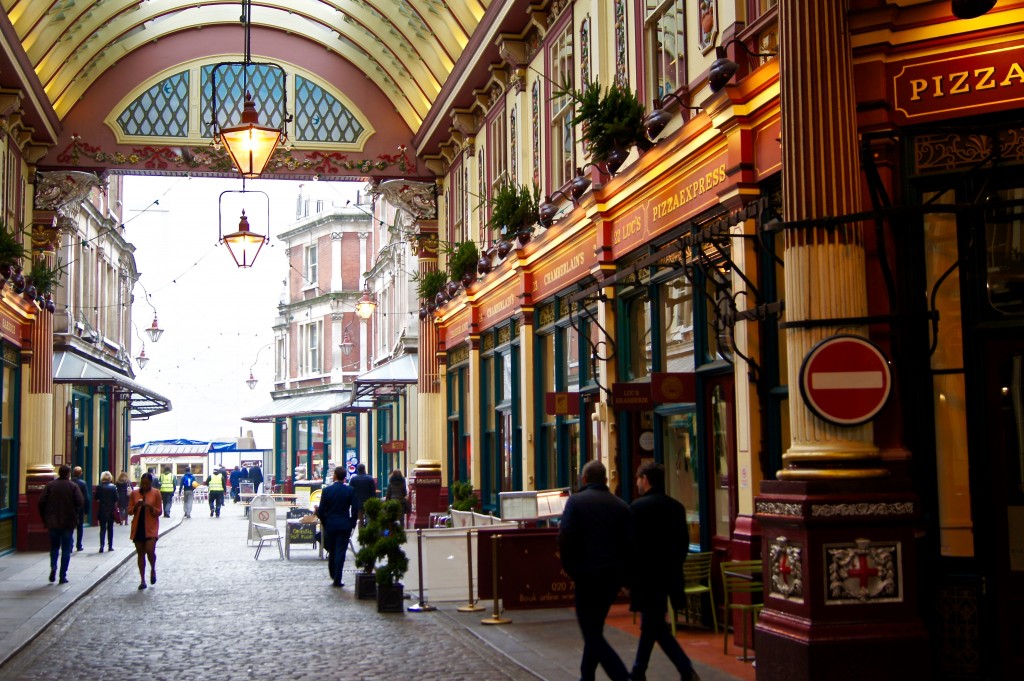
Why Take a Walking Tour with Context Travel
It is not about sightseeing, but really seeing the sites. Context Travel’s unique approach to a walking tour leaves visitors wanting to learn more about a city. Many of their guides are M.A. or Ph.D. scholars. As you walk not only will they narrate your experience but they will engage you in thoughtful conversations. Context Travel takes a maximum of six people at a time so your guide won’t be using a megaphone or carrying a flag. During your tour, you will have plenty of time for conversation and questions. If you are interested in deepening your knowledge about the history, art, and culture of the city you are visiting, I highly recommend booking one of their tours on your next trip. You will come away with a deeper understanding of the place you have visited.
Save 10% off your next tour with promo code 4983172F
Disclosure: While Context Travel provided the City of London Tour, no other compensation was received for this review. This post reflects the honest opinion of my experience without outside influence.


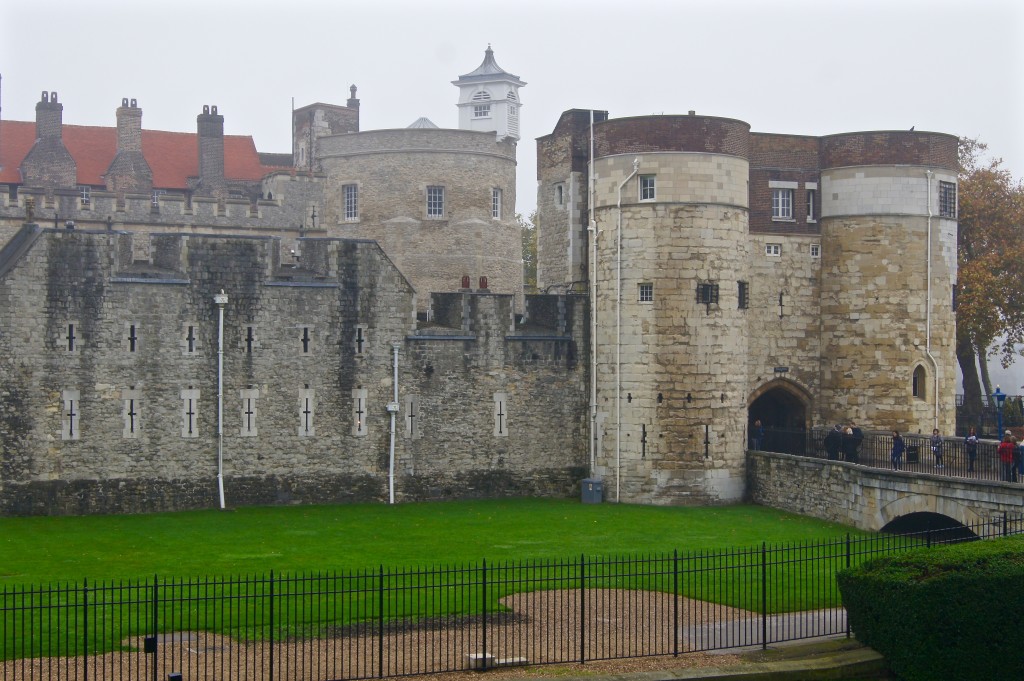
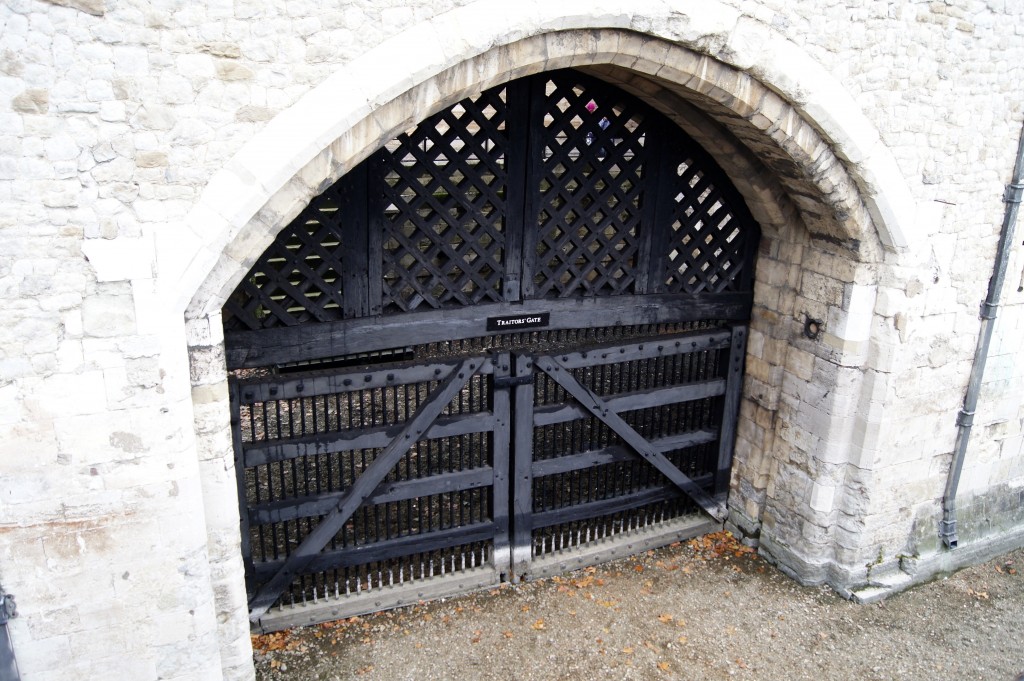
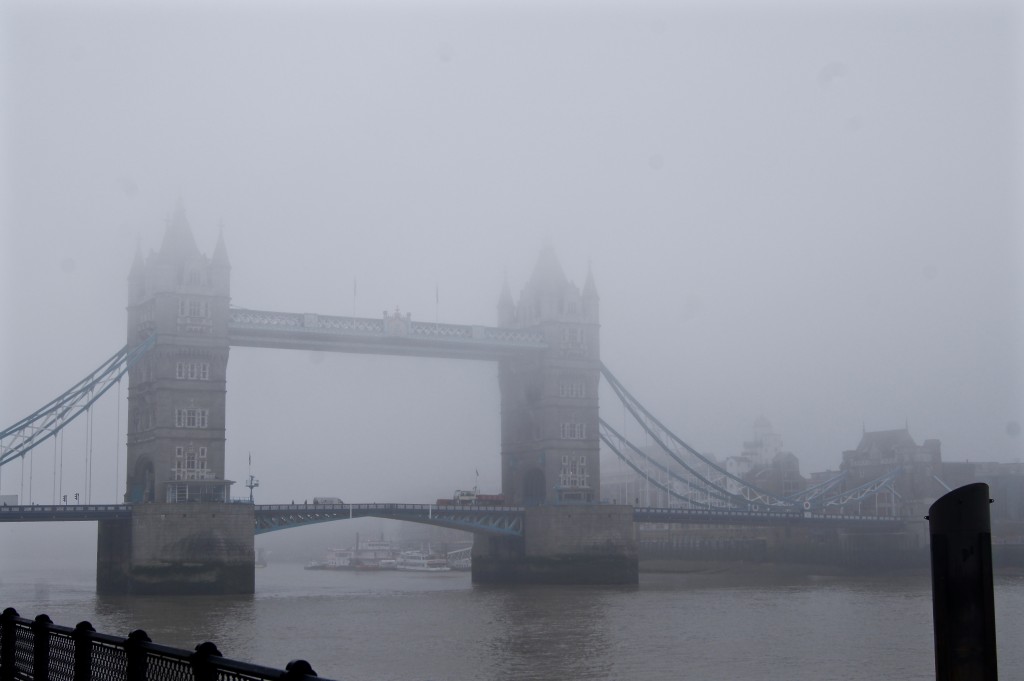
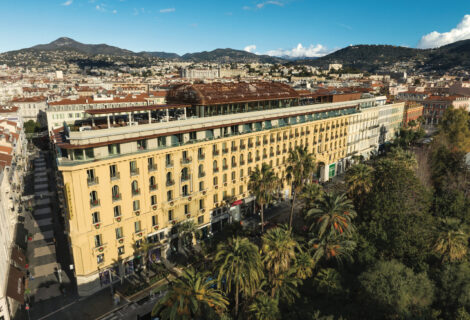





What a perfect guide you have here, Dana! I am saving your post as the best guide when I travel to London!
Glad you enjoy it. Context Tours are really fantastic. I am doing one in Dublin with them this Summer.